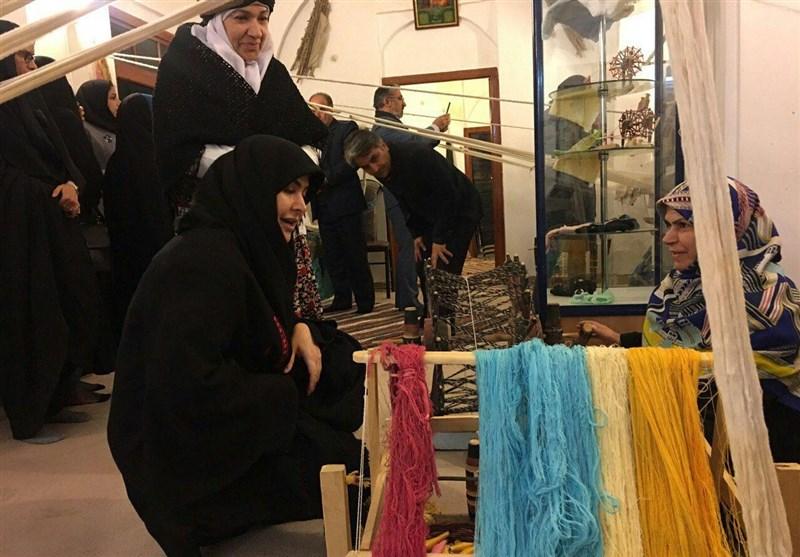The remarks were made by Pouya Mahmoudian, the Deputy Minister of Cultural Heritage, Tourism and Handicrafts on the margins of her visit to Khorashad Village in South Khorasan province.
Khorashad is the village that was visited by representatives of the World Crafts Council in November 2018, who are considering registering the town’s fabric-weaving art known as Tobafi, one of the major handicraft skills and traditional arts of South Khorasan.
The art has been revived thanks to the great efforts made, and its products are offered on international markets.
The Tobafi art, as the only handicraft skill in the province, has been nominated to receive the originality seal from the country’s Ministry of Cultural Heritage and Tourism.
In order to weave fabric with the traditional Tobafi method, they first provide raw materials such as cotton, silk or wool. Then they spin them. Afterwards, they boil the spun thread and use flour to make the thread thicker. Then they use the fabric and the fabric-weaving machine to make the final product.
In her remarks in Khorashad, Mahmoudian further referred to the national registration of the nearby city of Khusf as the country’s centre of Malleh, a type of brown cotton.
“If the infrastructure is provided, we will work towards the global registration of Khusf as the town of Malleh. The global registration of an area would mean the presence of tourism, more marketing and generating profit and income.”
She further expressed regret that the country’s precious gemstones are being exported as raw material. “Our wish is to achieve a point where through processing precious gemstones and stopping the sale of raw precious and semi-precious gemstones, we will enjoy surplus value in this field,” she further stated.
There will be collaboration between the Cultural Heritage, Tourism and Handicrafts Ministry and the Ministry of Industry with the aim of preventing the sale of raw precious and semi-precious stones in the near future, she announced.
